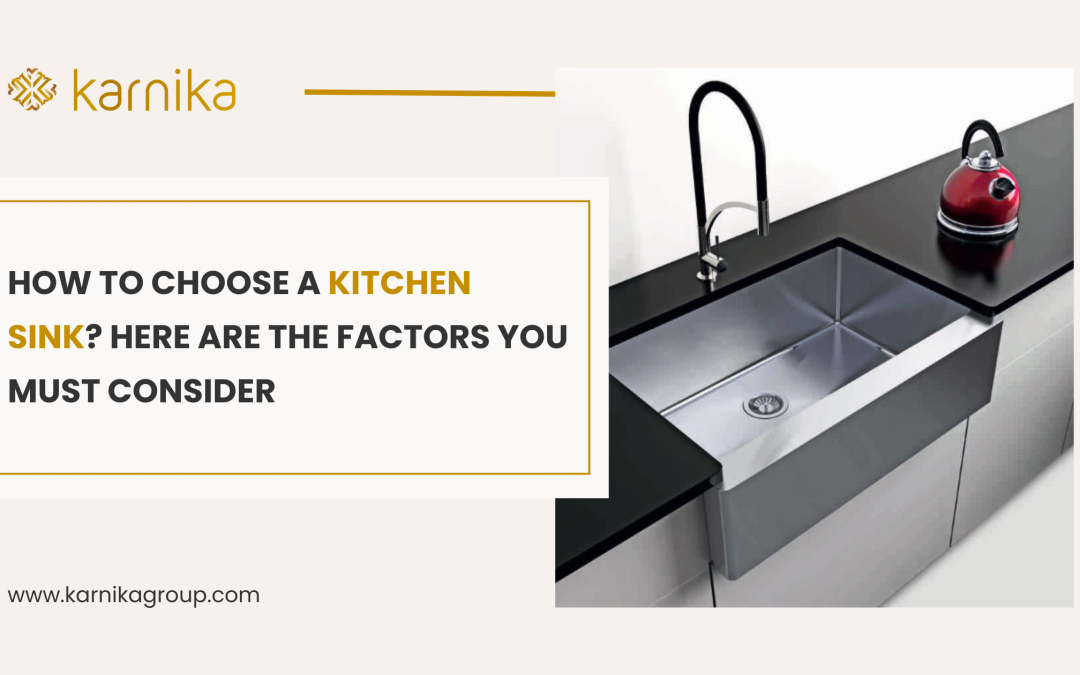Your kitchen sink does more than just hold dishes. It’s where meal prep begins and cleanup ends. Picking the right sink can elevate your kitchen’s functionality while complementing the style. But with so many options, how do you decide? Let’s dive into the key factors you need to weigh before buying. Choosing the perfect sink is about balancing aesthetics with practicality.
Material Matters: Pros and Cons of Kitchen Sink Materials
The material of your sink affects both durability and aesthetics. Stainless steel sinks are popular due to their resistance to stains and heat. They are lightweight, making installation easier, and they complement modern kitchen designs. Porcelain sinks bring vintage charm but can chip easily if you’re not careful with heavy pots. Composite granite sinks are durable and offer a modern look, resisting scratches and stains. Copper sinks, though less common, offer a unique, rustic aesthetic and have natural antimicrobial properties. Consider what suits your kitchen’s vibe and how much maintenance you’re willing to handle.
Sink Size and Depth
A deep sink can hide a mountain of dishes, but it might be tough on your back if you spend long hours cleaning. They are perfect for large families or those who love to entertain, offering ample space for oversized cookware. Shallower sinks are easier to reach but may overflow quicker when multitasking, making them ideal for smaller households. Think about your cooking habits and the size of your cookware. Your sink’s size should match your lifestyle. Also, consider countertop space—a larger sink might mean less room for other essentials.
Mounting Styles
Top-mount sinks, also known as drop-in sinks, are easy to install and budget-friendly. They have a visible rim that rests on the countertop, making them suitable for most kitchen styles. Undermount sinks give a seamless look and make countertop cleaning easier. Farmhouse or apron-front sinks add rustic charm but need custom cabinetry, which might increase installation costs. Each style has its pros and cons, so align them with your kitchen design and budget.
Number of Bowls
Single-bowl sinks offer more space for large pots and pans, making them a favourite for those who cook frequently. They also provide a sleek, uncluttered look. Double-bowl sinks let you multitask, washing in one and rinsing in the other, or separating clean dishes from dirty ones. Some even opt for triple-bowl sinks for specialized tasks, like a small bowl for prep work and two larger bowls for washing and rinsing. Assess your kitchen routine to see what setup fits best.
Faucet and Accessories Compatibility
Your sink should accommodate your preferred faucet style—pull-down, pull-out, or touchless. Pull-down faucets are great for deep sinks, offering flexibility for rinsing large items. Pull-out faucets are compact and versatile, ideal for smaller sinks. Touchless faucets add a high-tech element to your kitchen. Consider additional accessories like cutting boards, drying racks, and soap dispensers that can integrate with the sink. Some sinks come with built-in accessories, enhancing functionality. Don’t forget about garbage disposals—ensure your sink setup is compatible if you plan to install one.
Material Coordination with Other Kitchen Elements
Ensure your sink complements other elements like kajaria ceramic floor tiles or your chosen Asian paints sleek kitchen design. A stainless steel sink might pair well with modern, minimalistic kitchens, while a porcelain or farmhouse sink suits a more rustic aesthetic. Harmonizing the sink’s finish with your countertops and vitrified floor tiles in Kolkata can tie the space together. For instance, if you have bold, patterned tiles, a simpler sink design might balance the look.
Durability and Maintenance
How much time are you willing to spend cleaning and maintaining your sink? Stainless steel requires regular wiping to avoid water spots and scratches. Porcelain needs gentle care to prevent chips, and harsh cleaners should be avoided to maintain its shine. Composite materials resist stains but might need special cleaners to avoid surface damage. Copper sinks develop a natural patina over time, adding character, but they require regular polishing to maintain their original look.
Budget Considerations
Kitchen sinks range from budget-friendly to high-end. While it might be tempting to splurge on a designer sink, balance quality with cost. Sometimes, a mid-range sink offers the best of both worlds, providing durability and style without breaking the bank. Don’t forget to account for installation and any additional fixtures needed, like faucets or custom cabinetry. High-end sinks often come with built-in accessories, but these can be purchased separately if you’re working within a tighter budget.
Consulting Experts
When renovating your kitchen, it’s wise to consult professionals. A Kajaria tiles dealer in Kolkata can guide you on matching your sink with floor tiles for home that bring out the best in your kitchen. They can offer insights on current trends, ensuring your kitchen stays stylish for years to come. Experts ensure you make choices that are both stylish and functional. Whether it’s choosing the right sink material or finding the perfect tile to complement your Asian paints sleek kitchen, professional advice can make a world of difference.
Choosing the right kitchen sink isn’t just about looks—it’s about function, durability, and harmony with your kitchen’s overall design. Consider the factors above, and you’ll find a sink that not only meets your needs but also enhances your kitchen’s heart. Your sink is more than a utility; it’s a center piece that ties your kitchen together.

